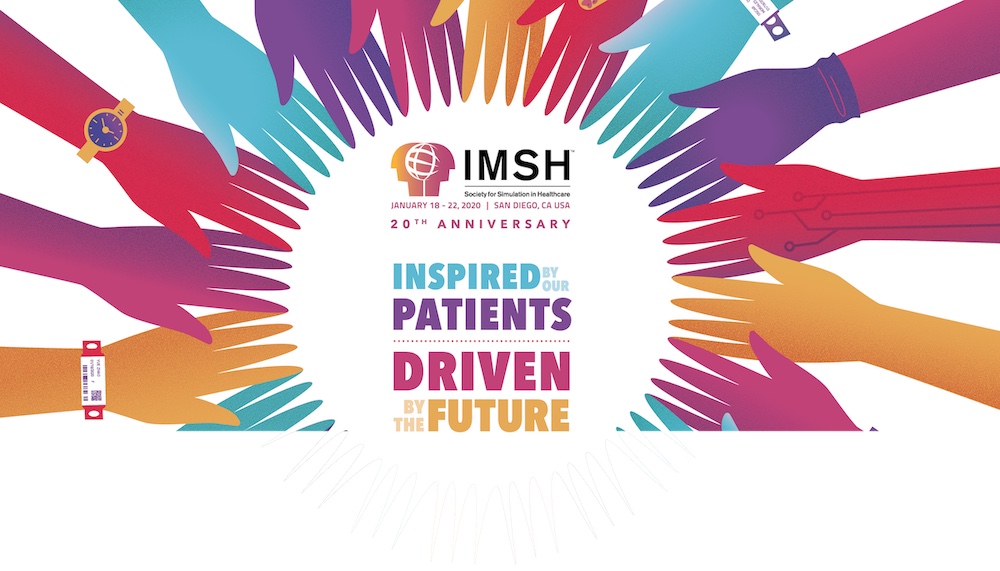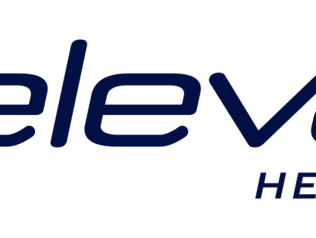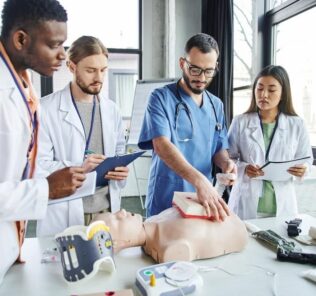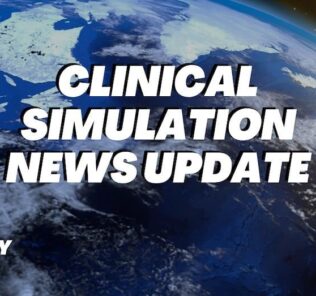IMSH 2020 Opens to Record Breaking Number of Healthcare Simulation Champions
Today the International Meeting for Simulation in Healthcare opened its first full day of activities in San Diego California. Surrounded by beautiful water, great weather, and vibrant city IMSH has attracted close to 4000 participants from 58 countries and over 120 vendors. This article will be updated throughout the day with the latest exciting news from the world’s largest medical simulation conference!
This IMSH is the first meeting where educational tracks were added to help attendees navigate through the 300 sessions offered at the healthcare simulation conference. The meeting opened with presentations from the meeting organizers and current president. The 2020 recipient of the Pioneer Award, Dan Raemer was one of the original founders of the Society and is credited with expanding the society from a mainly anesthesiologist based membership to include all medical specialities and disciplines.
This year saw the election of a new president Bob Armstrong who is the first simulation technologist to be appointed to head the organization. Bob is the Executive Director of the Sentara Center for Simulation and Immersive Learning at Eastern Virginia Medical School (EVMS) in Norfolk, Virginia. His background includes military modeling and simulation. His goal for the year is to focus on enhancing the value of the society for members as well as to forge a closer collaboration between SSH and other healthcare simulation societies and affiliates.
Sponsored Content:
This year’s speaker for the Lou C. Oberndorf – Lecture on Innovation in Healthcare Simulation is Mick Ebeling the American film producer, author, and philanthropist. He founded the “Not Impossible Foundation”, an organization comprised of thinkers, dreamers, and doers, with a mission to take ideas that once seemed impossible to possible, when the right people are connected and empowered. Ebeling believes that “Impossible” is a fallacy and his mission is to change the world through technology and story. His foundation has been responsible for assisting amputees in Africa, ALS patients and Parkinson patients with limiting tremor. No credentials, no training, no tangible reason to succeed. Their process starts by identifying one victim and telling their story and then working to help them.
Yesterday the opening plenary session was given by Carey Lohrenz, former lieutenant in the U.S. Navy who was the first fully qualified female naval aviator to fly the F-14 Tomcat in the U.S. military. Ms Lohrenz shocked the audience when she opened by saying that she believed both of her deceased parents would most likely have been alive today if it were not for medical errors.
She noted that there are upwards of 200,000 medical errors annually which is the equivalent of 390 jumbo jet crashes! Ms Lohrenz suggested that no one would fly with those kinds of odds. She believes that simulation is in part responsible for the low risk of flying and she urged attendees to tell their story particularly on social media.
Ms Lohrenz went on to share her story of her life as a Navy pilot. She noted that in spite of the crew of an aircraft carrier changing frequently and having an average age of 19, everyone worked and trained everyday to ensure the safe take off and landing of the Tomcats. She noted she could not have done her job without everyone else. All the team had their eye on their purpose, were always focused and very disciplined. She believes simulation is transformative and that simulationists should focus on the valuable work we can do and here own mantra is “if you lose the sight, you lose the flight”.
Sponsored Content:
She continued that simulation plays a key role in preventing errors. She urged attendees to share their knowledge by telling their story on social media.
Networking Opportunities
IMSH provides opportunities for different groups to network together to share ideas and learn about best practice. Some of the groups that met at IMSH this year included the low cost, low resource group, Nursing, IPE affinity group, serious games group, and anesthesiology section to name but a few. The nursing section broke up into several round groups to discuss various concerns of the members. These topics included patient safety, faculty development, faculty and OSCE for NP programs, clinical ratios, accreditation/magnet status and general networking. Following completion of the sections, the groups joined together to share information and exchange contact information. Networking at meetings provides an opportunity for simulationists to spread information about various concerns and to brainstorm about solutions.
Key Vendor Announcements from the Exhibit Hall
- Education Management Solutions Launches New *Must See* Simulation Learning Systems
- CAE Healthcare Academy Offers Training Consultation Expertise
- Oxford Medical Simulation Announces New Multiplayer Platform for IPE
- New Study Finds VR Effective for ACLS Training with 83% Cost Savings
- McGlinn Institute Provides Specialized Neonatal Skills, Courses & Simulation Training Opportunities
- Echo Healthcare Showcases Unique Healthcare Educational Tools
Check out tomorrow’s article to learn more about #IMSH2020!
Lance Baily, BA, EMT-B, is the Founder / CEO of HealthySimulation.com, which he started in 2010 while serving as the Director of the Nevada System of Higher Education’s Clinical Simulation Center of Las Vegas. Lance also founded SimGHOSTS.org, the world’s only non-profit organization dedicated to supporting professionals operating healthcare simulation technologies. His co-edited Book: “Comprehensive Healthcare Simulation: Operations, Technology, and Innovative Practice” is cited as a key source for professional certification in the industry. Lance’s background also includes serving as a Simulation Technology Specialist for the LA Community College District, EMS fire fighting, Hollywood movie production, rescue diving, and global travel. He and his wife live with their two brilliant daughters and one crazy dachshund in Las Vegas, Nevada.
Sponsored Content:


















